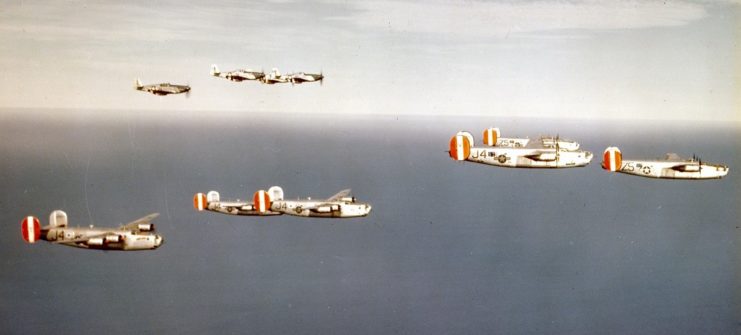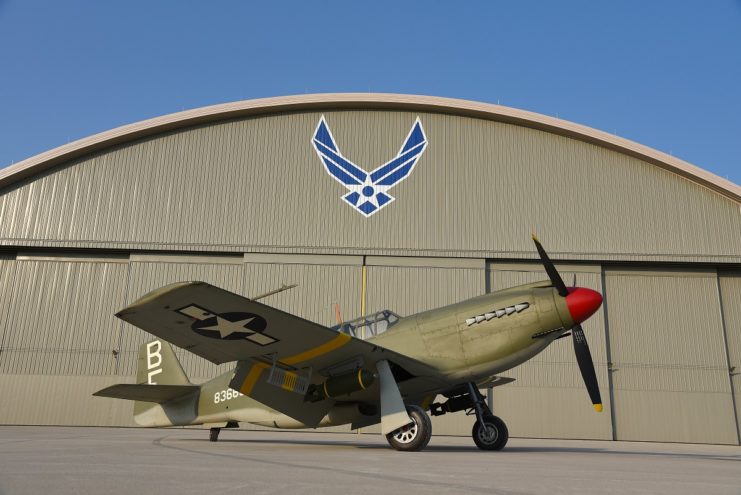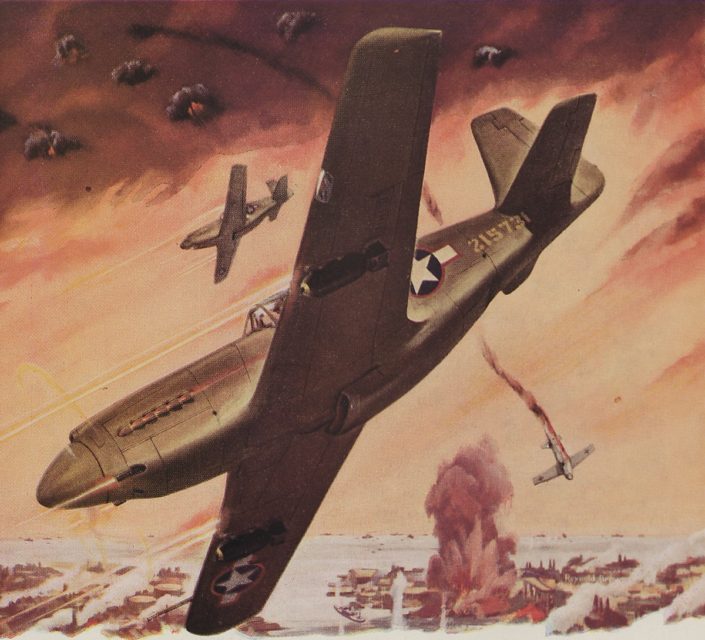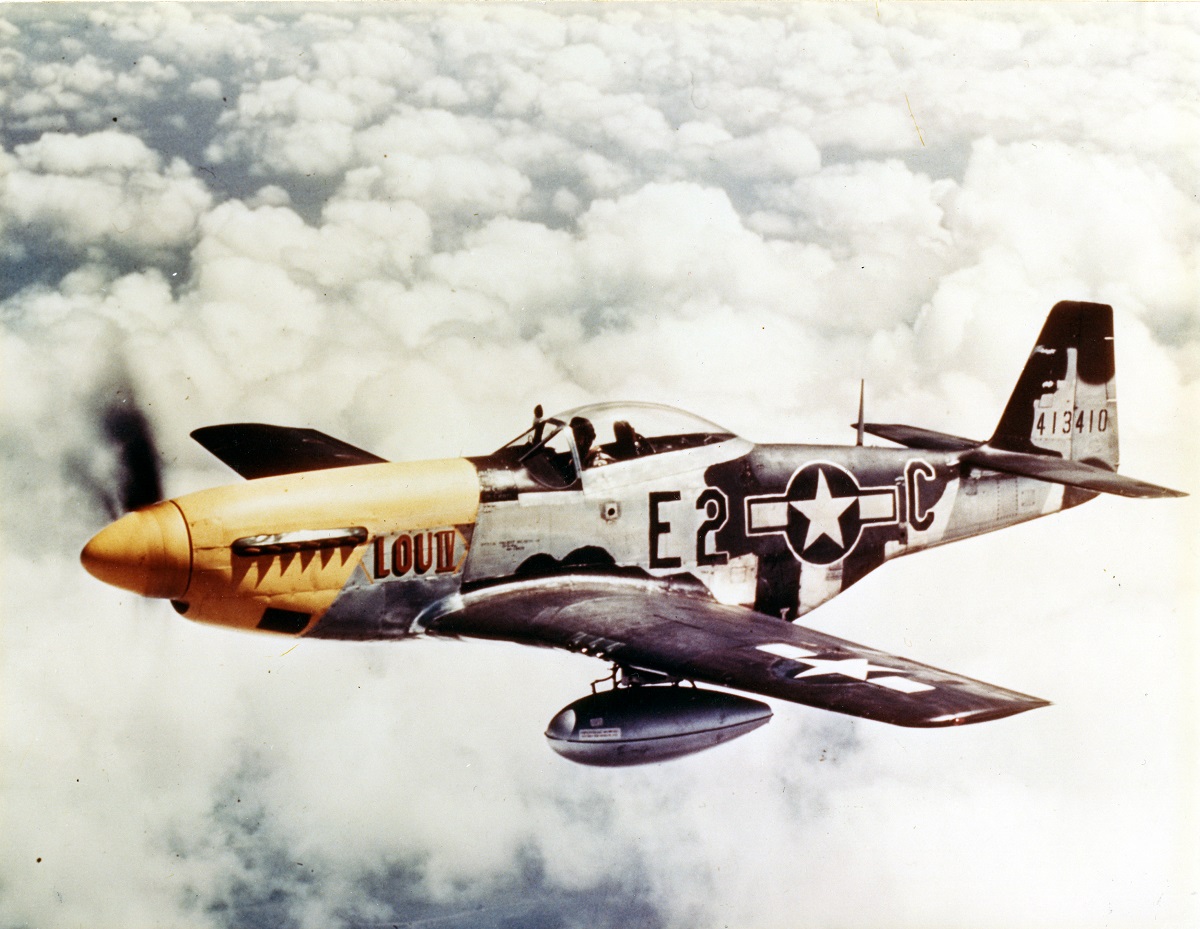The P-51 Mustang is usually near the top of most aviation enthusiasts’ favorite WWII aircraft list, as it combines sleek, muscular looks with excellent performance, reliability, and range. For a single-engine aircraft, the P-51 was a great jack of all trades. The P-51 is a fighter and is remembered for being able to escort bombers all the way to Berlin and back, but interestingly, the US actually fielded a dive bomber version of this aircraft before the fighter.
The P-51 was already a very capable ground attack aircraft, with good low-level performance and a reasonable payload it could certainly do some damage. So why was there a dedicated ground attack/dive bomber variant?
No funds for fighters… plenty for attack aircraft!

The British started receiving Mustangs in early 1942, where it operated alongside Curtiss P-40 Tomahawks. The Mustang was actually built for the British, who called them the North American Mustang Mark I. The British quickly took a liking to the aircraft, but performance at higher altitudes was underwhelming. At this point, the Mustang famously lacked the Rolls-Royce Merlin engine.
Because of these performance limitations, these Mustangs were mostly used for reconnaissance and ground attack.
These early successes got the attention of the US, and North American aviation pioneer Howard “Dutch” Kindelberger asked the US Army Air Force (USAAF) to start using it themselves. Unfortunately, the USAAF had already run out of funds for new fighter aircraft, so the Mustang could not be produced.
Conveniently, there were funds available for attack aircraft, so to keep the Mustang airframe in production, it would temporarily be built as a ground attack aircraft. In April 1942 a contract was signed for the construction of 500 ground-attack-based Mustangs, which was called the A-36.
There is some debate about the name of the A-36, with both Apache and Invader being commonly used. But it was actually still a Mustang, as the Air Force didn’t want the enemy to know about this variant.
A-36 Mustang

North American modified the basic Mustang airframe; bulking it up in areas, giving it stronger wings, adding dive brakes and hardpoints for bombs. Like the early Mustang fighters, the A-36 carried four guns in the wings and two in the fuselage, synchronized to fire through the propeller. All of these were .50 caliber machine guns.
Also, like the fighters, the A-36 was powered by an Allison V-1710 V12 engine, which produced around 1,325 hp at 3,000 feet. While no way near as good as the Merlin-powered Mustangs, this engine still gave the A-36 a respectable top speed of 365 mph and a range of 550 miles when loaded with bombs.
Only 500 A-36s were built. They were used in North Africa, the Mediterranean, and in the China-Burma-India theatre.
They are often regarded as rather poor-performing aircraft, but this is not entirely true. In combat, the A-36 proved to be a capable dive bomber, with a quiet engine and very stable handling, these aircraft were able to get on top of the enemy and accurately drop bombs in a precise manner. Also as it was tuned for low-altitude flight, the A-36 was nimble and agile at a low level.

They were unable to match dedicated fighters though and had to drop down to low altitudes for the best chances of success. In total 177 were lost.
However, A-36s managed to score 101 air victories – a testament to the Mustang’s airframe, as even with an arm tied behind its back it was still a formidable foe.
But the A-36 succeeded in other ways, namely keeping the production line up and running in preparation for the P-51. When the fighter variant started production, North American Aviation workers were well experienced with the airframe.
The A-36 was pulled from operational use in 1944 and replaced by the Curtis P-40 Warhawk and much more rugged P-47 Thunderbolt. It was quickly overshadowed by the exceptional P-51 Mustang and then forgotten.
